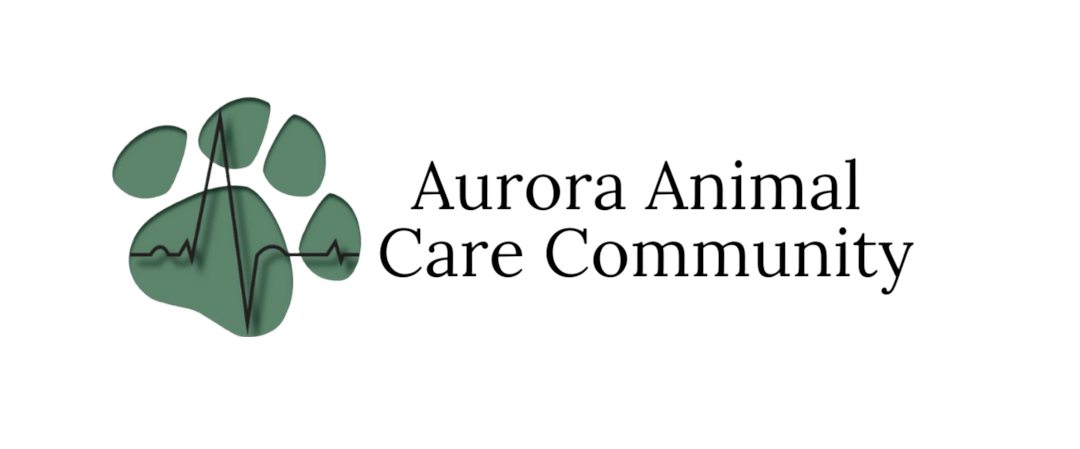Protecting Your Pets from Harmful Flora
Our pets hold a special place in our hearts, filling our lives with laughs and companionship. As responsible pet owners, it's crucial to be aware of potential dangers that could harm our dogs and cats. Among these dangers are toxic plants, which can pose serious threats. In this summarized guide, we'll delve into a list of common household and garden plants that are toxic to pets. Each plant listed has a link to the ASPCA Pet Poison Control Hotline Website with more detailed information. By familiarizing ourselves with these plants, we can create a safe environment that prioritizes our pets' health and happiness.
Understanding Plant Toxicity:
Plants produce a wide range of chemicals, some of which can be harmful if ingested by pets. These toxins can lead to various symptoms, ranging from mild discomfort to life-threatening conditions. Recognizing and identifying toxic plants is vital to prevent accidental ingestion and ensure prompt action when exposure occurs.
List of Toxic Plants:
*Please note, this list is not comprehensive. Please go to the ASPCA Pet Poison Control List of Toxic and Non-Toxic Plants to search for the specific plant of interest*
 Aloe Vera: Toxic to dogs and cats. Ingestion may lead to gastrointestinal upset such as vomiting, diarrhea, and lethargy.
Aloe Vera: Toxic to dogs and cats. Ingestion may lead to gastrointestinal upset such as vomiting, diarrhea, and lethargy.
 Amaryllis: Toxic to dogs and cats. Ingestion leads to vomiting, diarrhea, and abdominal pain.
Amaryllis: Toxic to dogs and cats. Ingestion leads to vomiting, diarrhea, and abdominal pain.
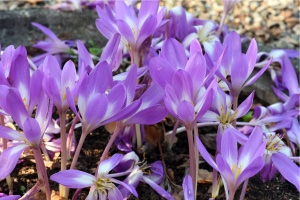 Autumn Crocus: Toxic to dogs and cats. Ingestion leads to severe organ damage and potential fatality.
Autumn Crocus: Toxic to dogs and cats. Ingestion leads to severe organ damage and potential fatality.
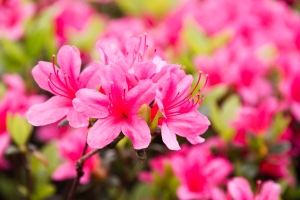 Azalea/Rhododendron: Toxic to cats and dogs. These vibrant shrubs contain grayantoxin that may result in vomiting, diarrhea, and cardiac failure.
Azalea/Rhododendron: Toxic to cats and dogs. These vibrant shrubs contain grayantoxin that may result in vomiting, diarrhea, and cardiac failure.
 Calla Lily: Toxic to dogs and cats. Contains insoluble calcium oxalates which can cause oral irritation such as intense burning/irritation of the mouth, tongue, and lips; excessive drooling, vomiting, and difficulty swallowing.
Calla Lily: Toxic to dogs and cats. Contains insoluble calcium oxalates which can cause oral irritation such as intense burning/irritation of the mouth, tongue, and lips; excessive drooling, vomiting, and difficulty swallowing.
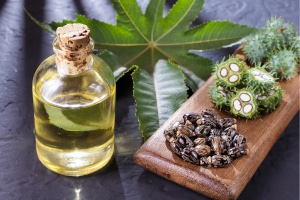 Castor Bean Plant: Toxic to dogs and cats. Seeds contain ricin, a potent toxin which can cause death.
Castor Bean Plant: Toxic to dogs and cats. Seeds contain ricin, a potent toxin which can cause death.
 Chrysanthemum: Toxic to dogs and cats. These flowers contain pyrethrins, causing gastrointestinal upset and skin irritation.
Chrysanthemum: Toxic to dogs and cats. These flowers contain pyrethrins, causing gastrointestinal upset and skin irritation.
 Daffodil: Toxic to dogs and cats. Daffodil bulbs contain toxins causing vomiting, diarrhea, and other symptoms. Large ingestions cause convulsions.
Daffodil: Toxic to dogs and cats. Daffodil bulbs contain toxins causing vomiting, diarrhea, and other symptoms. Large ingestions cause convulsions.
 Day Lily: Toxic to cats, non-toxic to dogs. Causes vomiting, inappetence, lethargy, kidney failure, and death.
Day Lily: Toxic to cats, non-toxic to dogs. Causes vomiting, inappetence, lethargy, kidney failure, and death.
 Dieffenbachia: Toxic to dogs and cats. Common indoor plant. Contains insoluble calcium oxalates which can cause oral irritation such as intense burning/irritation of the mouth, tongue, and lips; excessive drooling, vomiting, and difficulty swallowing.
Dieffenbachia: Toxic to dogs and cats. Common indoor plant. Contains insoluble calcium oxalates which can cause oral irritation such as intense burning/irritation of the mouth, tongue, and lips; excessive drooling, vomiting, and difficulty swallowing.
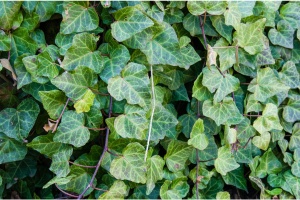 English Ivy: Toxic to dogs and cats. Contains triterpenoid saponins which cause vomiting, abdominal pain, hypersalivation, and diarrhea. Foliage is more toxic than berries.
English Ivy: Toxic to dogs and cats. Contains triterpenoid saponins which cause vomiting, abdominal pain, hypersalivation, and diarrhea. Foliage is more toxic than berries.
 Foxglove: Toxic to dogs and cats. A beautiful but dangerous plant affecting the heart by causing cardiac arrythmias, vomiting, diarrhea, cardiac failure and death.
Foxglove: Toxic to dogs and cats. A beautiful but dangerous plant affecting the heart by causing cardiac arrythmias, vomiting, diarrhea, cardiac failure and death.
 Holly: Toxic to dogs and cats. Contains saponins which can cause vomiting, diarrhea, and depression. Leaves and berries are low toxicity.
Holly: Toxic to dogs and cats. Contains saponins which can cause vomiting, diarrhea, and depression. Leaves and berries are low toxicity.
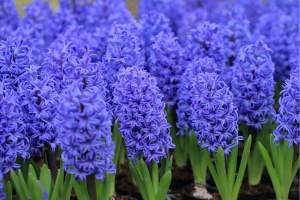 Hyacinth: Toxic to dogs and cats. Can cause intense vomiting, diarrhea, depression, and tremors.
Hyacinth: Toxic to dogs and cats. Can cause intense vomiting, diarrhea, depression, and tremors.
 Iris: Toxic to dogs and cats. Contains pentacylic terpenoids which can cause salivation, vomiting, drooling, lethargy, and diarrhea.
Iris: Toxic to dogs and cats. Contains pentacylic terpenoids which can cause salivation, vomiting, drooling, lethargy, and diarrhea.
 Lily of the Valley: Toxic to dogs and cats. Contains cardenolides which cause vomiting, irregular heartbeat, low blood pressure, disorientation, coma, and seizures.
Lily of the Valley: Toxic to dogs and cats. Contains cardenolides which cause vomiting, irregular heartbeat, low blood pressure, disorientation, coma, and seizures.
 Marijuana: Toxic to dogs and cats. Contains Delta-9-THC which after ingestion can result in prolonged depression, vomiting, hypersalivation, seizures, coma, and rarely death.
Marijuana: Toxic to dogs and cats. Contains Delta-9-THC which after ingestion can result in prolonged depression, vomiting, hypersalivation, seizures, coma, and rarely death.
 Mistletoe: Toxic to dogs and cats. Both American and European mistletoe contain lectins and phoratoxins which can cause vomiting, diarrhea, difficulty breathing, low heart rate.
Mistletoe: Toxic to dogs and cats. Both American and European mistletoe contain lectins and phoratoxins which can cause vomiting, diarrhea, difficulty breathing, low heart rate.
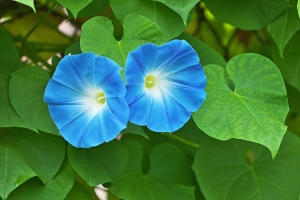 Morning Glory: Toxic to dogs and cats. Ingestion can lead to hallucinations, tremors, and digestive issues.
Morning Glory: Toxic to dogs and cats. Ingestion can lead to hallucinations, tremors, and digestive issues.
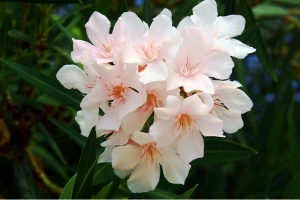 Oleander: A highly toxic plant affecting the heart and gastrointestinal system.
Oleander: A highly toxic plant affecting the heart and gastrointestinal system.
 Peace Lily: Toxic to dogs and cats. Contains insoluble calcium oxalates which can cause oral irritation such as intense burning/irritation of the mouth, tongue, and lips; excessive drooling, vomiting, and difficulty swallowing.
Peace Lily: Toxic to dogs and cats. Contains insoluble calcium oxalates which can cause oral irritation such as intense burning/irritation of the mouth, tongue, and lips; excessive drooling, vomiting, and difficulty swallowing.
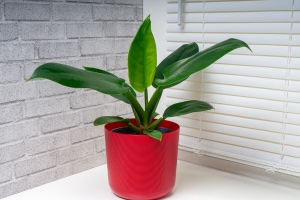 Philodendron: Similar to pothos, it causes mouth and stomach irritation.
Philodendron: Similar to pothos, it causes mouth and stomach irritation.
 Pothos/Devil's Ivy: Toxic to dogs and cats. Common indoor plant. Contains insoluble calcium oxalates which can cause oral irritation such as pain and swelling of the mouth, tongue, and lips; excessive drooling, vomiting, and difficulty swallowing.
Pothos/Devil's Ivy: Toxic to dogs and cats. Common indoor plant. Contains insoluble calcium oxalates which can cause oral irritation such as pain and swelling of the mouth, tongue, and lips; excessive drooling, vomiting, and difficulty swallowing.
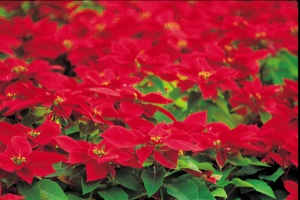 Poinsettia: Toxic to dogs and cats. While not as toxic as believed, ingestion can still lead to mild gastrointestinal upset. Generally over-rated in toxicity.
Poinsettia: Toxic to dogs and cats. While not as toxic as believed, ingestion can still lead to mild gastrointestinal upset. Generally over-rated in toxicity.
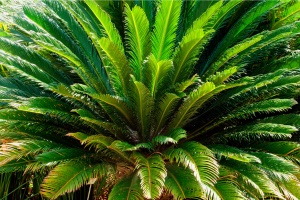 Sago Palm: Toxic to dogs and cats. All parts of this ornamental plant are toxic and can lead to liver failure.
Sago Palm: Toxic to dogs and cats. All parts of this ornamental plant are toxic and can lead to liver failure.
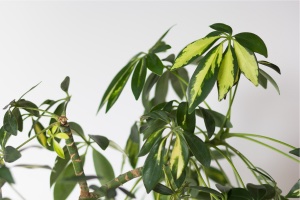 Schefflera: Toxic to dogs and cats. Known as an umbrella tree, it causes oral irritation and digestive problems from calcium oxalate crystals.
Schefflera: Toxic to dogs and cats. Known as an umbrella tree, it causes oral irritation and digestive problems from calcium oxalate crystals.
 Snake Plant: Toxic to dogs and cats. Contains saponins which cause nausea, vomiting, and diarrhea.
Snake Plant: Toxic to dogs and cats. Contains saponins which cause nausea, vomiting, and diarrhea.
 Tulip Bulbs: Toxic to dogs and cats. Causing vomiting, depression, diarrhea, hypersalvation. The highest concentration of toxin in the bulb.
Tulip Bulbs: Toxic to dogs and cats. Causing vomiting, depression, diarrhea, hypersalvation. The highest concentration of toxin in the bulb.
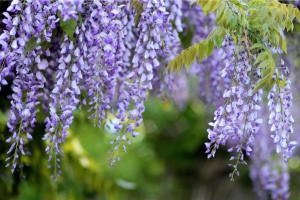 Wisteria: Toxic to dogs and cats. Contains lectin, which is can cause vomiting, diarrhea, and depression if ingested.
Wisteria: Toxic to dogs and cats. Contains lectin, which is can cause vomiting, diarrhea, and depression if ingested.
 Yew: Toxic to dogs and cats. All parts of the plant contain the toxin taxine, which can cause sudden death from sudden cardiac failure. Early signs include muscle tremors, irregular breathing, and seizures.
Yew: Toxic to dogs and cats. All parts of the plant contain the toxin taxine, which can cause sudden death from sudden cardiac failure. Early signs include muscle tremors, irregular breathing, and seizures.
Recognizing Symptoms and Taking Action:
Symptoms of plant toxicity include vomiting, diarrhea, drooling, lethargy, breathing difficulties, seizures, and abnormal heart rate. If ingestion is suspected, seek veterinary care promptly. Contact your veterinarian or a pet poison helpline for guidance on appropriate actions.
Creating a Safe Environment:
- Research: Thoroughly research plants before introducing them to your surroundings.
- Elevate Plants: Place toxic plants out of reach or opt for pet-safe alternatives.
- Supervision: Watch over pets outdoors, especially around potentially harmful plants.
